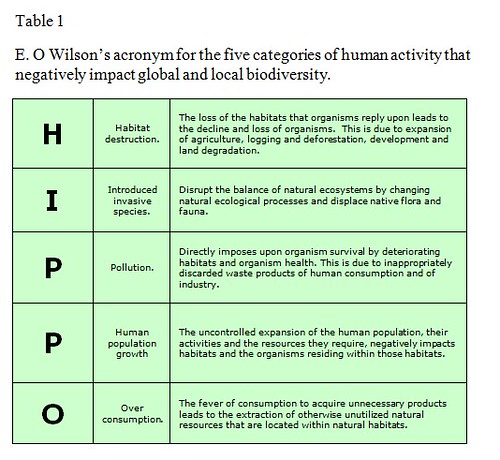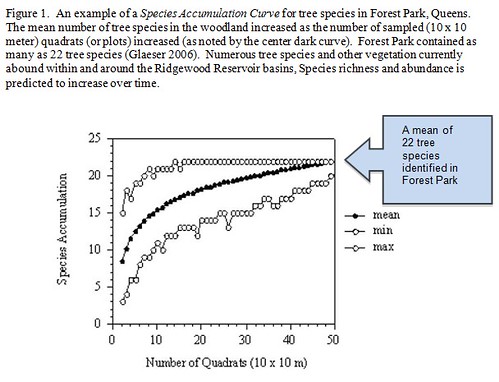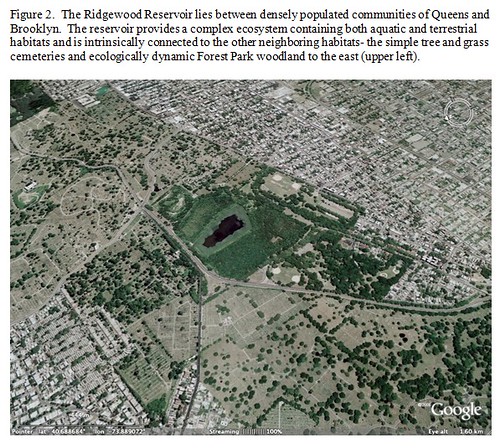The renowned Harvard University entomologist and ecologist Professor Edward O. Wilson spoke in early April 2008 at New York City Town Hall for a rare and extensive interview by the award winning journalist and author Elizabeth Kolbert. The interview, sponsored by the Natural Resources Defense Council (NRDC) pursued a discussion on the importance of natural habitats as refuges for preserving global biological diversity, the continued assault upon those habitats and ecosystems by humans and the greater consequences to the planet. Well versed in the topic of conservation biology and terrestrial ecology, in 1986 E. O. Wilson and others coined the term BIODIVERSITY and in his 1988 book of the same name described the state of the planet is biological diversity during that decade. Twenty years later and a re-read of that book suggest that with the increasing scale of loss to biodiversity there have been minor achievements in preserving it. In fact the destruction of habitats and its biodiversity has become much more rapid, more efficient and covering greater areas especially from the spread of housing development and the expansion into natural areas for agricultural production.
Biodiversity describes the variety and number of species of plants, animals, and microorganisms, the ecological roles they play, the enormous diversity of the genes in these species (genetic diversity) and the different ecosystems on the planet that they inhabit e.g., deserts, temperate forests, rainforests, marshes and coral reefs that all contribute to a biologically diverse planet. The importance of biodiversity may not be immediately apparent to the average urban dweller, if at all. That is because centuries ago much of the world is population began a shift from agrarian societies to urban centers. As a modern urban society we stopped relying upon the limitations of local ecosystems. So, in a sense as urbanites have lost touch with the natural world, our pursuit of a full understanding of it and its limitations. Yet one must still consider the overall value of biodiversity for the benefit and well being of humanity. Biodiversity values are largely utilitarian suggesting the abundance of organisms to provide for our medicinal needs, wood and agricultural products, fibers, textiles and organic compounds etc. Biodiversity also provides the ecosystem benefits and services such as the trees and vegetation that ameliorates the heat island effect, sequesters carbon, provides habitat, stabilizes soils and, contributes to the life sustaining water, oxygen, nitrogen and carbon cycles. To note our moral, ethical and aesthetic values for preserving biodiversity we are reminded of our place within this biosphere and that humans are indeed an integral part of, not separate from the world is ecosystems. Even early biblical scriptures required that we be mindful of the need to have dominion and partake in the stewardship of global diversity (Eldredge 2001).
Biodiversity: What is it?
All biological organisms are vital resources, yet by the current scale of human activities and interventions many terrestrial and aquatic organisms have been placed on a course toward the 6th largest extinction of species known to this planet, explained Dr. Wilson. This is in contrast to the last major extinction of species that occurred at the end of pre-Cretaceous period some 65 million years ago by geologic and/or volcanic events. That extinction wiped out most of the remaining terrestrial dinosaurs, marine animals and many other species. At first glance the extinction events of the past might seem to have little or nothing to tell us about the current 6th Extinction. However there is little doubt that humans are the direct cause of ecosystem stresses, habitat destruction and loss of species in the modern world brought about by the excessive altering of landscapes (as seen by the wholesale development for housing and agricultural expansion), the introduction of non-native invasive species, overexploitation of species, pollution and over population (Eldredge 1998, 2001). Approximately 30,000 species go extinct annually because of these impacts and there is no question that the impacts often have profound effects on human health and welfare.

Dr. Wilson utilized the acronym H I P P O to describe the five criteria by which human activities and interventions threaten and endanger biodiversity wherever it is found (Table 1). The first two letters of this acronym are scaled to have the largest consequences to biodiversity. Urban areas are not at all removed from the large-scale disruptions and losses of land-based ecosystems. The urban example is contrasted to regions more associated with biodiversity hotspots, such as in the new world tropical rain forests or even the old growth forests of Oregon. Urban areas, with their large environmental foot-print1 are synonymous with ecological disruptions and environmental degradation that results in losses of natural habitats.
As one of the inventors of the concept of ecological footprint in 1992 Bill Rees described that our planet indeed requires natural capital (resources) like trees to provide the ecosystem services for clean air and water that we all depend on. Queens County, the tenth most populated county within the United States has a relative human population density of 20,409 people / square miles (2.23 million inhabitants, 2000 Census). Queens has always captured the greater share of New York City’s population growth and it will continue to do so upon a limited land area of only 109 square miles. The continued growth in human population as is predicted in the Mayoral PLANYC 2030 (2008) will expand that foot-print, further impacting and placing stresses upon ecosystems and the organisms they contain. The people-use impacts upon the remaining natural habitats (and likely parkland) in urban Queens must remain a persistent theme to those concerned about the threats to biodiversity.
Here, as well as within ecosystems elsewhere the factors that contribute to increases in biodiversity is ecological heterogeneity. The concept is simple. The more structurally complex (or heterogeneous) an ecosystem is, the greater the species diversity. This is contrasted to simpler man-made, homogeneous and manicured terrestrial systems that are often found to be species poor. Resource heterogeneity is defined by nesting habitats and food abundance, soil nutrient availability, abundance of water and, spatial heterogeneity explains the distribution of species abundance that may occur at different scales across the landscape (Huston 1996). This applies especially to the species richness in plant communities across the fragmented urban woodlands of the City of New York (Greller et al. 1979; Glaeser 2006; Fitzgerald and Loeb 2008). One of the general characteristics of ecological communities is that the number of species accumulates with increasing area. Ecologists determine the number of plant species by plotting a Species Accumulation Curve that identifies the mean number of tree species in say, neighboring Forest Park that accumulate with an increase in the number of sampling plots. In the graph, the center mean number of species increased to a total of 22 tree species as a representative count for the park (Figure 1). Despite the current species diversity, local ecologists and botanists find that these parkland habitats are under threat and require protection and preservation. The loss of plant communities by the transformation of the landscape for other societal needs (e.g., facility construction or ball fields) or their extirpation by non-native invasive species, pollution and, trampling from over-use is a clear call for concern.

Queens satisfies all five of the criteria of Wilson’s acronym, HIPPO. For this report a natural area in Queens is examined as providing two good examples of those criteria; (H) Habitat Destruction and (I) Introduce Invasive Species. Citing current conditions within the United States, 85% percent of the losses in biodiversity are caused by habitat destruction where 45% are caused by invasive species invasion alone. Queens contains the greater acreage of parkland and other public properties where plant communities and habitats are likely to be found. However there is much evidence that many plant communities are indeed threatened by both Habitat Destruction and Introduced Invasive Species.
Ridgewood Reservoir at Highland Park, Ridgewood, NY
One large parcel of a publicly owned young forest is the Ridgewood Reservoir at Highland Park. This former water reservoir is on the southwest Queens-Brooklyn border and located along the Harbor Hill terminal moraine- the most southern edge of the last glacier in our area. It is adjacent to densely populated neighborhoods to the north and south and a large spread of open and tree-occupied cemeteries (Figure 2). For decades the reservoir was left abandoned and through ecological succession it emerged into an extensive plant community- a refuge for urban flora and fauna. Niles Eldredge stated that ‘Nature abhors a vacuum’ and the vacuum of the one-time reservoir prompted an instantaneous ecological reaction that resulted in its current naturalized state. Forest succession here is evident by numerous pioneer tree species, understory shrubs and vines, wetlands and pockets of open meadows in transition to woods distributed across three interconnected basins occupying approximately 50 acres of open public space. With the accumulation of flora over time this ecosystem has become heterogeneous and readily provides habitat for birds and other wildlife. That heterogeneity can be compared to the simpler, homogeneous, species-poor, tree-and-grass ecosystem found in the adjacent cemeteries.

Unique to this urban biodiversity paradigm is a forest dynamic equivalent to temperate wooded parkland elsewhere (notably species richness, abundance and dominance). Despite the young age of the reservoir woodland, botanists from the Brooklyn Botanic Garden identified 11 tree species. The plant species richness of the reservoir at the current stage of succession can be compared to the nearby Forest Park, a mature native hardwood forest a few miles to the east. A plant census of the woodland in 2000 revealed 22 tree species belonging to a remarkable 13 tree families and with the other flora combined- 56 plant species belonging to 32 plant families (Glaeser 2006). Many of the park’s older large broad canopy trees, e.g. black, red and white oaks and beech trees are estimated to be greater than 100 years of age that define the mature age of this forest and its biodiversity.
In the reservoir refuge, the current level of diverse trees and other vegetation provide habitat for numerous organisms such as birds. In 2008 the National Audubon Society posted on its website in 2008 that the former reservoir basins combined provided habitat for an astounding 148 bird species, including 8 rare species. Though the current biodiversity level is perceived as significant it is important to note that this refuge is young (in a forest time-scale) and will likely acquire many new organisms as the habitat becomes more heterogeneous. Yet much of the plant data and ecological details of this reservoir ecosystem has still yet to be fully quantified. A quantification of the refuge is vital to understanding its full value and ecological dynamics.
Wilson’s example of habitat destruction as the largest contributor in the decline of biodiversity is currently being played out at the Ridgewood Reservoir. The overseeing mayoral agency, the NYC Department of Parks & Recreation (DPR) in 2008 proposed that this refuge (or a part of it) be retrofitted for active sport recreation and has targeted it for redesign and demolition. It is understandable for this agency to address the need for active recreational sports. Yet it is opined that that can be done elsewhere and the plan is currently being protested. The destruction of urban woodland will undoubtedly impact the habitat for resident and migratory bird population as well as the many other beneficial organisms, many not yet fully accounted for. It is important to note that the recent Urban Conservation Treaty for Migratory Birds signed by the Department of Parks and other local NGO’s in October 2008 can place the reservoir as a candidate for protection funding under this treaty.
The presence of non-native plant species in our environment follow a typical continuum; CULTIVATED => ESCAPED => NATURALIZED => INVASIVE
It is the non-native invasive plant species now well established across the refuge and numerous other parklands, is a concern for the overall health of the ecosystem. Though non-native invasive plants may appear to contribute to woodland heterogeneity by providing food and habitat for numerous fauna, their characteristic as prolific seed producers, their aggressive underground rhizomes (or roots) and a more competitive photosynthetic system over native flora when left unchecked increasingly inundate greater acreage of parkland. These plants compete for resources, disrupt ecosystem processes, squeeze-out the native flora and create unsightly and an unkempt park appearances. Perennial, ubiquitous non-native invasive plant species such as multiflora rose/rambler rose (Rosa multiflora), porcelain-berry (Ampelopsis brevipedunculata), oriental bittersweet (Celastrus orbiculatus), English ivy (Hedera helix), japanese knotweed (Polygonum cuspidatum), mugwort (Artemesia vulgaris), garlic mustard (Allaria petiolata) and bamboo (Bambusa spp.) all expand in biomass making them increasingly difficult and costly to control and eradicate (Figure 3). The impact and consequences of invasive species upon natural ecosystems occurs across all levels of biotic organization and will result in a modification of the fundamental ecosystem properties required to maintain native populations (Henderson et al. 2006). An enormous input of manpower and technology is what is required to control and eradicate invasive plant species.
Conclusion
The 21st century is a new era for concern about environmental matters. There is much talk of our City being ‘green and sustainable’. Yet the proposed demolition of the Ridgewood Reservoir clearly flies in the face of the need to maintain biodiversity where in terms of the overall land area of Queens (and Brooklyn) now largely disturbed and paved, such little biodiversity indeed really exists. It also flies in the face of the current Mayoral PLANYC 2030 that attempts to paint the City of New York as ‘green and sustainable.’ I opine that ‘green and sustainable’ applies only to the building construction industry as seen by Leadership in Energy and Environmental Design (LEED) Certification projects and has little to do with landscapes such as the reservoir and other parks. What is observed is the absence of a behavior by the mayor and his commissioners that would protect and preserve landscapes, habitats and trees across the Commons from demolition and the swallowing-up of habitats by invasive plant species. What is also clearly being observed is how the 6th extinction of species is being contributed to in our very own urban backyard.
In his closing comments, Professor Wilson stated that this generation needs to be mobilized into action in order to preserve biodiversity that is now so threatened. That action begins by the citizenry learning about ecosystems, becoming a steward for natural resources and partaking in its preservation and care. For the Ridgewood Reservoir refuge that requires community activism to assert that Best Management Practices be carried out by the agency charged with preserving parkland and its biodiversity. It should be noted that already numerous advocates and stewards of the Reservoir have taken the initial steps and action to assure the preservation of this parkland refuge becomes a reality and that it will be there for future generations.
Citations
City of New York. 2008. PLANYC. “A Greener, Greater New York.”
Eldredge, N. 1998. Life in the Balance: Humanity and the Biodiversity Crises. Princeton University Press.
Eldredge, N. 2001. The Sixth Extinction.
HYPERLINK: http://www.actionbioscience.org/newfrontiers/eldredge2.html
Fitzgerald J. M. and R.E. Loeb 2008. “Historical ecology of Inwood Hill Park,” Manhattan, New York. Journal of the Torrey Botanical Society 135 (2): 281-293.
Footprint Network News. http://www.footprintnetwork.org/newsletters/gfn_blast_0610.html
Glaeser C. W. 2006. “The floristic composition of community structure of the Forest Park woodland, Queens County, New York.” E-journal- Urban Habitats 4:102-126.
Greller A.M, R.E. Calhoun and E. Iglich, 1979. “The upland oak-dominated community of Forest Park, Queens County, New York.” Bulletin Torrey Botanical Club 106:135-139.
Henderson S., T.P. Dawson and R.J. Whittaker. 2006. “Progress in Invasive Plant Research.” Progress in Physical Geography 30: 25-46.
Huston M. A. 1996. Biological Diversity: The coexistence of species on changing landscapes. Cambridge University Press.
Wilson E. O. 1988. Biodiversity. The National Academic Press.
Website Action
Action Bioscience: www.actionbioscience.org/biodiversity/wilson.html
American Museum of Natural History: www.amnh.org/biodiversity
Biodiversity Project: www.biodiversityproject.org
Conservation International: www.biodiversityhotspots.org
Center for Plant Conservation: www.centerforplantconservation.org/invasives
E. O. Wilson's Encyclopedia of Life – www.EOL.org
Invasive Plant Council for New York State: www.ipcnys.org
International Union for Conservation of Nature: www.iucn.org
Natural Resources Defense Council: www.nrdc.org
1 Ecological Footprint: An analysis that gauges our impact on the planet's biological systems. The ecological footprint measures human consumption of natural resources in comparison to Earth's ecological capacity to regenerate them. Individually, each of us has “a footprint,” and, collectively they aggregate across geographical zones and other means of classification. Calculation of the footprint takes into account just about everything we do; from the food we eat, to the house we live in, to the car we drive and the other consumption habits we practice each day.
Dr. Glaeser is the Vice President of Kissena Park Civic Association and Chair: Tree and Landscape Protection Subcommittee, Queens Civic Congress.



